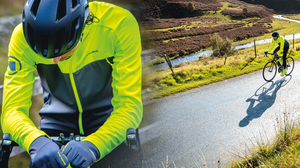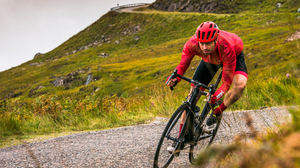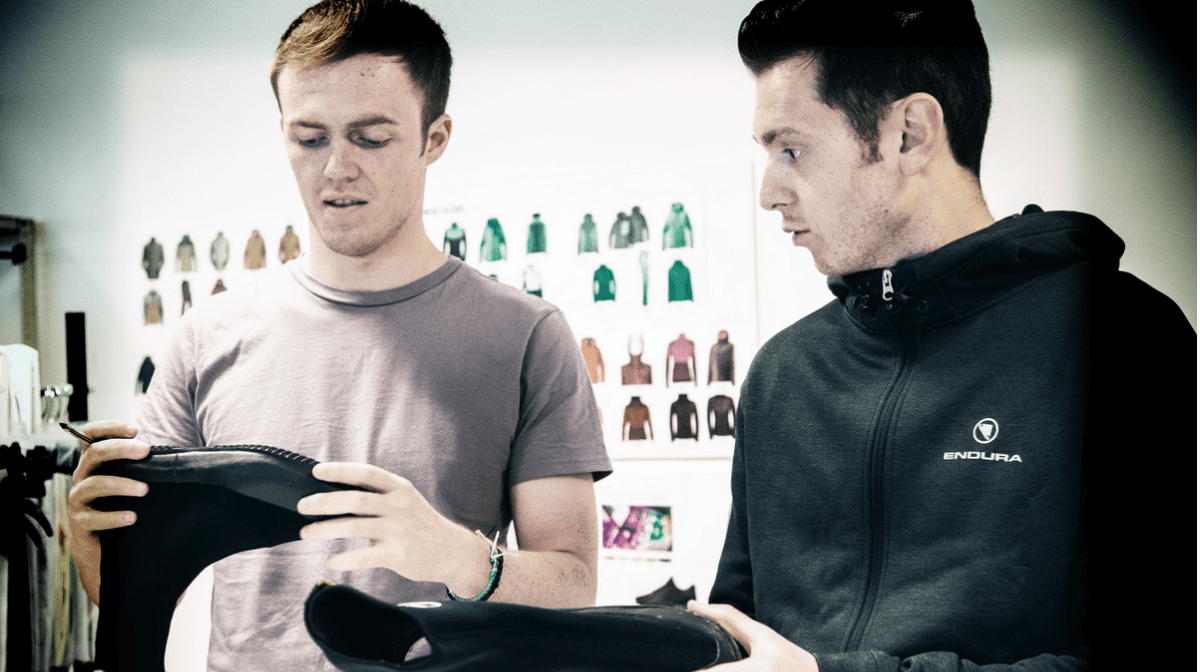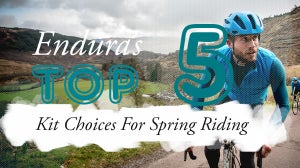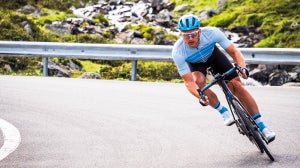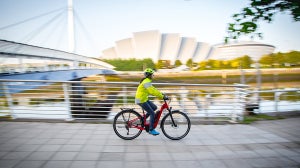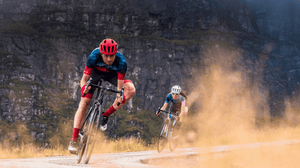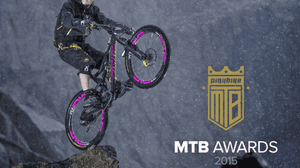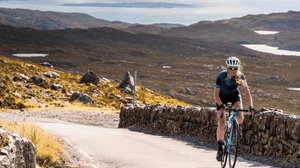
If product developer Matt Innes talks of dream jobs and jumping in at the deep end almost in the same sentence, it’s a testament to the passion that he brings to his role at Endura. Innes is one of Endura’s young guns, the bright young minds clustered in the marketing and product development teams, but which are to be found throughout the company.
For a design graduate with a passion for the outdoors, a job with Endura, after a previous role designing kitchen furniture, might in itself be filed under ‘reasons to be cheerful’. The challenge of creating a product from scratch, of taking it from sketch to sample to shop floor, must be an even greater thrill.
Innes cannot conceal his enthusiasm, even in a phone call. He is bright and personable and inclined to dismiss his talent with a metaphorical shrug. He talks in detail about the challenges encountered in realising the MT500 Plus Overshoe, and of the financial pressures that accompany the design of any product that requires bespoke tooling to manufacture, but he does so in a way that implies he is doing no more than his job.
"Initially we researched things like diving shoes and galoshes, just getting down to the different design attitudes behind each product. We knew that overshoes for cyclists existed of course, but the problem, even with our MT500 overshoe, was that pretty much all of them were secured with a Velcro strap across the sole of the foot, which would interfere with flat pedals."Innes soon discovered that the challenges in creating an overshoe for flat pedals are many and varied. Achieving a fit tight enough to prevent the toe from lifting during hike-a-bike sections was necessary of course, but had to be counterbalanced with the needs of a user group unused to pulling on and taking off overshoes.
The decision to use neoprene for the upper was arrived at fairly quickly (but only after ruling out a raft of other materials, up to and including the heavier fabrics Endura uses for rain jackets), but even here a strategic approach was required in the use of overlays to reinforce the fabric and balance stretch with durability.
Five weeks into the design process, concepts for the sole were still under discussion. Brand Director Pamela Barclay suggested a moulded sole, and Innes busied himself with CAD software, and researching rubber compounds with sufficient bend for walking, but durable enough to withstand assault from sharp pedals.
"Working with CAD takes time," he says. "You need to be very accurate, because any changes to the mould adds further time to the process. Each sample would take five weeks to develop, and then need further time in testing."
Innes remembers this part of the process as the most stressful. Any amendments to the design require amendments to the mould. Bear in mind too that the MT500 Plus Overshoe comes in three sizes. Costs can quickly mount.
"The timeline was probably as long as the MT500 Helmet," Innes says, a surprising admission, given the obvious sophistication of Endura’s game-changing mountain bike helmet, and a revelation that offers the greatest insight into the level of detail required to create such a seemingly humble product as an overshoe.
Present simple
Spotting a need among riders and filling it is more easily said than done. Cyclists are an uncompromising bunch; the nature of the sport demands it. The bio-mechanical interface of pedalling is often not easy on equipment or rider. Only the best will do.
A ride of almost any distance in formal attire provides a reminder of how well cycle clothing performs. Even the shortest spin in jeans that chafe, jackets that sweat, shoes that slip and bend makes a compelling case for technical apparel, and the right tools for the job.
For Brand Director Pamela Barclay the MT500 Plus Overshoe embodies Endura’s philosophy of Renegade Progress: a restless desire to create and to develop; to improve and to optimise. How much easier might it have been to tweak the standard (and hugely popular) MT500 Overshoe? But this is not how things are done in Livingston.
"When you’ve built a brand on authenticity, the easy option is no option at all," Barclay explains. "People buy Endura products because they work. A sales pitch doesn’t count for much when your feet are wet and your shoes are ruined. It’s creative thinking that our tribes value, and the effort we make in producing sample after sample until we’re satisfied that a prototype is ready to be called a product."
Trainer-style riding shoes are not cheap. For many, including UK freeride legend Chris Smith, a smart pair of riding kicks are good to wear in town, too. The sinking feeling - literal and metaphorical - that accompanies the sacrifice of a favourite pair of shoes to trail mud is rarely cherished.
The MT500 Plus Overshoe is that rarest of products: the simple solution. That it protects without restriction, stays in place when pushing or pedalling, fits a wide variety of shoe shapes and sizes, and is easy to put on and take off, says much for the creativity of Innes the developer and for Young’s quiet insistence.
Much of the thrill of trail riding lies in seizing the moment. Freeriding means just that. Increasing numbers of riders are finding that being clipped in is at odds with this mindset, never mind offering the easy escape route that big jumps or wicked corners sometimes insist upon. Flat pedals demand trainer-style riding shoes, and trainer-style shoes demand protection from mud and trail grime.
The MT500 Plus Overshoe, developed solely for this task, changes the game, however subtly. Many rider tribes make up Endura’s riding clan. To meet the needs of one and not another does not sit well with the Livingston mavericks. An overshoe for trainer-style riding kicks is in many ways a quintessentially Endura product, and further evidence that a simple solution is always the best.

Related Articles
